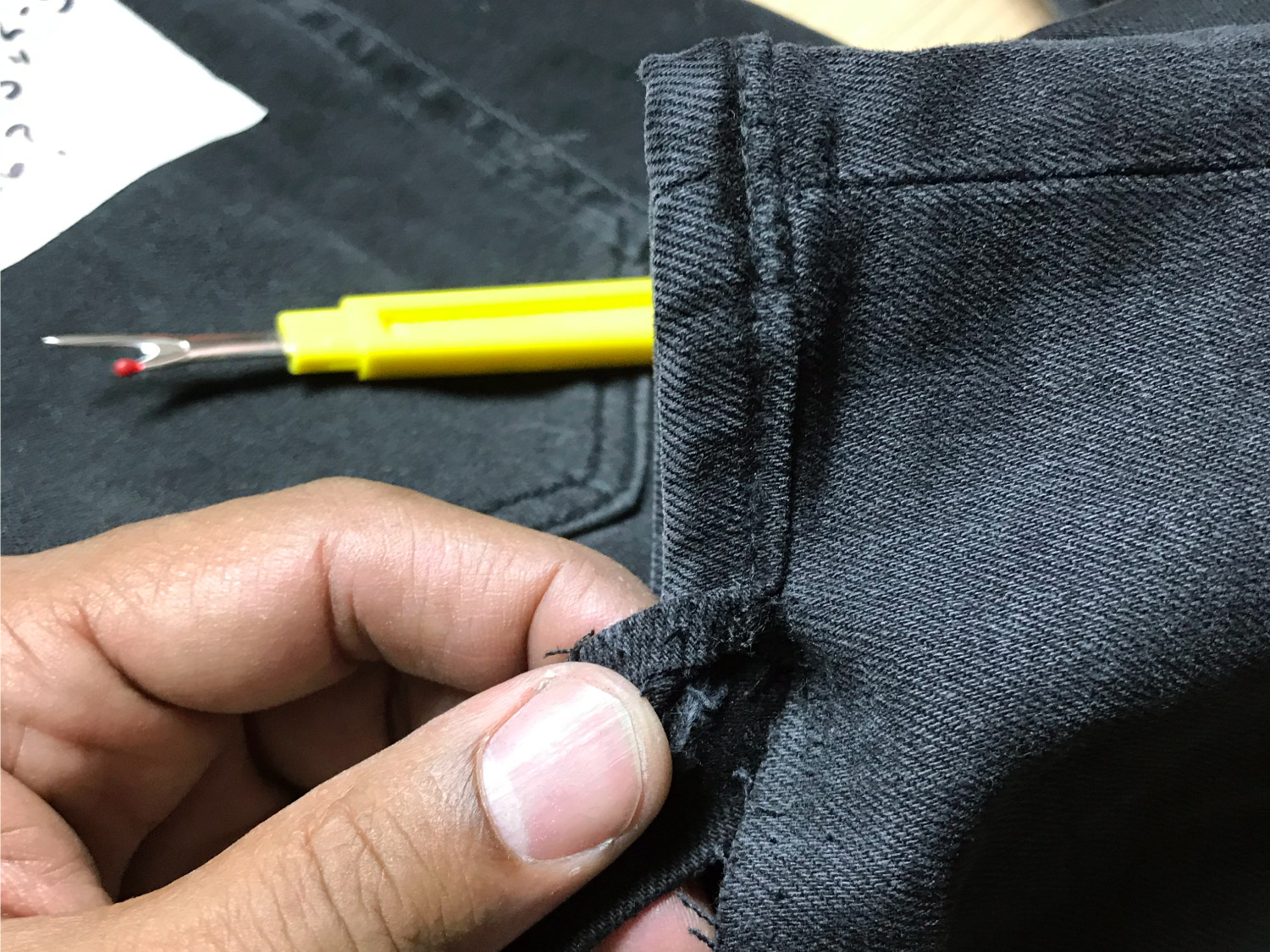Original Hem: The Conspiracy Theory of Denim Alterations
By Maurice Malone Published Aug. 24, 2020

Asking for, or letting a tailor talk you into performing an "original hem" alteration, which is cutting off the bottom edge on your jeans and reattaching it, is one of the worst things you can do to your jeans. Many people realize this later and then send us their jeans to rehabilitate them. We perform serious high-quality denim alterations and equate the original hem alteration, akin to a denim conspiracy theory.
There's simply no good reason to remove the worn hem of your jeans and have it sewn back on. After losing the old edge when shortening your jeans, regular washing, aging, and abrasion will cause the hem to fade again.

Don't destroy your jeans – A tip for aging the hem fast!
Here’s a tip for those who don’t have the patience to wait for natural aging and washing to take effect. After hemming your jeans correctly, take sandpaper and rough up the bottom edge. If your jeans were heavily fringed, take a blade or power sander and shred them, and then put them through a machine wash. This way you will still be able to cuff or roll your hem with pride. Best of all, you won't have a silly seamline where only a stitch should be.
Some of the complaints we heard from people who have done this is the leg opening became stiff and hoop-like. Feeling bulky and uncomfortable. This is because the thickness of the added seam limits the flexibility of the fabric.
Another caution against this. If the jeans were initially constructed with a chain-stitched hem, as most better-made jeans are, the chain stitch will be eliminated in trying to keep the original tattered hem.
Finally, the second technique which allows for a more flexible softer seam around the reattachment has the biggest drawback. Sloppy inside construction. Forget about cuffing or rolling your jeans.
For more information, read our blog post: Avoid original hem alterations
